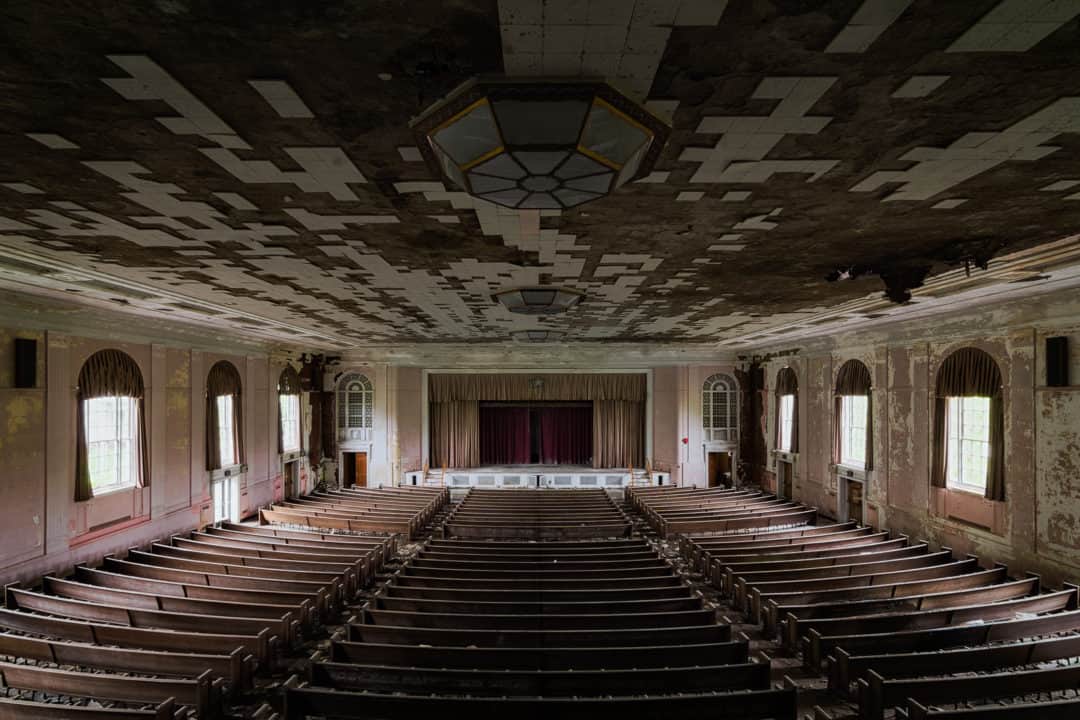Support me on Patreon for early access previews, rewards and giveaways!
Contact Me
Or use the contact form below.
Support me on Patreon for early access previews, rewards and giveaways!
Or use the contact form below.

You must always keep your wits about you when exploring an abandoned building. There are many hazards laying in wait for you as you explore. This FAQ will highlight some of the common dangers that I encounter while exploring. I hope they might be useful in helping you prepare for what lays ahead. This article is not exhaustive, and I am sure there are many more perils not covered here.
The views expressed here are my own. The information presented is based upon solely on my own opinions. I do not condone breaking and entering, damage to or theft from anywhere. We are all guided by our own moral compass, and the repercussions of the decisions we make are ultimately our own to bear.
There are many dangers in an abandoned building. You should never enter a location that you do not feel comfortable exploring. This depends on your definition of what you deem “safe to enter”. Always take your time to assess the building from the outside before you venture inside. Often, but not always, you will be able to get a rough idea of the hazards inside by taking a moment to pause and reflect.
There are structural dangers if the building is dilapidated and crumbling. Floors and ceilings may collapse without warning as you move around. There may be broken glass on the floor or sharp pieces of metal, or on ledges while you are climbing.
Think about possible chemical/material hazards! Older buildings may have asbestos or toxic lead-based paint. Industrial sites may have a wealth of hazards, including toxic or carcinogenic chemicals. It is possible certain places may have radiation hazards, although one would hope this would be removed prior to a site becoming abandoned (but, not always).
Beware of the risk of sudden drops (fall hazards). Elevator doors may be open, leading to an empty shaft. Guard rails from walkways and stairs may be removed leaving a possibility to fall. Mines and industrial sites are common places where shafts and other openings may be left uncovered.
Alternatively, there are naturally occurring biological hazards. Abandoned buildings are a haven from mold and fungus. Spores from these organisms possess health risks if inhaled. Another ubiquitous biological hazard in abandoned buildings; is the humble pigeon. Pigeon poop is also another real health hazard you may encounter, one that you won’t want to be breathing in.
Confined spaces may have restricted fresh air flow. It is possible that oxygen levels in sealed environments may be very low, low enough that you could pass out if you remain in there too long.
Remember your parents warning of “Stranger Danger”? You may not be alone in the abandoned building. Various potentially dangerous people may also be lurking inside. If the building is frequented by drug users, there may be syringes on the floor or hidden amongst the rubbish.
First and foremost. I always tell a trusted friend where I am going, I give them the location of where my car is parked and my entry point into the building. I use co-ordinates, or share a Google Maps pin. Additionally, I message them when I have safely left the location. If something goes wrong, I know this is a person who will take appropriate action, in the case of something unexpected happening to me. This is good advice even if you travelling with a group, it doesn’t hurt to drop a text to your trusted person with this information. It could save your life one day.
Always pay attention to your surroundings. Specifically, the condition of the floor and ceiling/roof if they are likely to collapse. Move slowly and plan your route, and look/listen for any subtle signs that things are on the move. If in doubt, find another route or even exit the location if you feel unsafe.
When you are climbing make sure you can see where you are putting your hands. There may be tiny glass shards left in that window frame you are pulling yourself though. It is a good idea to keep a pair of gloves in your bag, I prefer ones with tick rubberized grips as they protect me from minor scratches.
Beware of sharp objects on the floor such as nails or glass you may step on. A good sturdy pair of shoes are a great investment. Thick soles might save you from an upturned nail. Covered ankles might save you from a nasty slash from some sharp metal.
Always do your research and know what you are likely to encounter before entering an industrial site. Try to find out what was manufactured there, and what chemicals they would have used. There might be some nasty material left behind which could have health risks for you. If in doubt, it might be best to avoid it entirely.
Try not to kick up dust or disturb anything. Easier said than done, I know. Pay extra attention not to disturb anything that looks like it may be asbestos. The same goes for any powdered chemical, for that matter. Pigeon and bird poop also become powder in dry conditions, you don’t want to kick that up and inhale that (urgh!). Another option is to research an appropriate mask to protect yourself, and take this with you.
Even though you may have one torch, I advise always take a second. Secondly, always take a third! You can never have too many torches, you don’t want to be trapped in the dark without one.
If you are venturing underground, you must research the hazards and bring appropriate oxygen level/gas detectors. Exploring underground can be very dangerous!
If you have more questions that have not been answered, contact me using the form below. I will do my best to answer all questions!
Have I missed out some useful urbex tips for beginners? Let me know, and I will also add them.

I add new content every week, ranging from exciting new locations to blog articles about my road trips. My beautiful newsletter will bring my photographic adventures direct to your inbox!
Your email address will not be shared, or publicly displayed. I will only use your data to send you the newsletter, as outlined in the Privacy Policy. You can unsubscribe at any time, via the opt-out link included in every email.